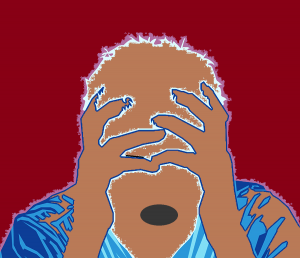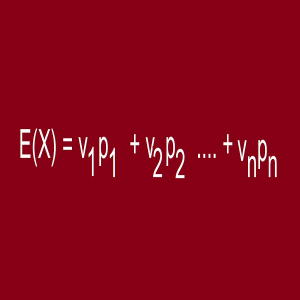A Guide to Staying Calm and Rational When Seized with ‘Cost Angst’

Depending on which form or calculation of cost (and resultant remorse) is “chosen”, that angst (including retrospective regret or anticipatory anxiety) may be smart—or not.
This observation holds in all domains of life—irrespective of whether it’s the pending or past decision to hire or not hire a candidate, the decision to have another child or merely the fact that you’ve got one (planned or not), the situation of having to pay for (or sell) that behemoth new SUV sitting in your driveway, or selling the house it would otherwise be parked at for the next few years.
Interestingly, even within the categories of smart cost-angst, some forms are smarter than others; then there the categories in which freaking out about costs is simply not rational, or at least not completely rational.
To make all of this less abstract, the following classification fo the main forms of cost-angst and its warranted and unwarranted forms will be helpful. An examination and understanding of these will serve to make cost analyses and reactions to them calmer and saner:
- Cost-benefit “gestalt shift” angst: Quite a common phenomenon, this form of cost angst (which has a parallel version, exaggerated “benefit bliss”) is among the least rational. It involves a sudden shift of unchanged costs to hot, exclusive prominence by zoom-shifting them to the foreground of panicky consciousness, instead of leaving them in the flat, rational plane of calculated costs side-by-side with benefits. In an alternative, yet equivalent characterization, it amounts to banishing the associated, real benefits of a decision or circumstance to the ignored, insignificant background.
This is tantamount to a “gestalt shift”, in which the mind switches roles for foreground and background figures in an image, e.g., the vase, thereby dramatically altering the perception of both, as one stands out at the expense of the other.

VASE-FACES GESTALT SHIFT
There are two versions of this: In the first instance, one of the two elements that were equally prominent, i.e., were perceived as being in a flat space with no foreground or background, suddenly goes 3D, leaping out into the newly-created foreground. In cost contexts, this is what happens when, despite no increase in costs or reduction of benefits, the mind fixates on and thereby emotionally exaggerates the costs and their impacts. (Benefit bliss involves the reverse.)
A good friend of mine recently succumbed to the cost-benefit gestalt shift by frightening himself with the costs of relocating his family to Canada, closer to the well-paid job he has—costs he had previously factored into his decision, as justified, given the obvious benefits for everyone in the family, e.g., proximity to good schooling, brand-new apartment; safe, clean and attractive neighborhood. He could, if that were not enough angst, also create a “benefit angst” shift, in which, somehow and paradoxically, he would profess that although the cost and benefit estimates are unchanged, somehow those benefits don’t count as much as they did—just because now the costs count more.
Since the anticipated and acceptable costs had not increased over his original estimates vis-a-vis the expected benefits, his sudden and severe cost-angst made no sense—unless a prior reverse “benefit bliss” gestalt shift is factored in: his previously zooming in on the benefits at the expense of the costs.
- Expected gain utility-probability shift angst: You’re feeling hopeful, if not lucky, and buy a pricey lottery-ticket pack. But then, as a variation on “buyer’s remorse”, you fret about the cost of that grab for the gold.
One possible reason for that is that your mind has shifted its focus from the utility of a winning ticket to the probability of having bought one. Just as figure and ground emerge or got reversed in my friend’s case, here, (dis)utilities and probabilities undergo a mental priority repositioning, with the scary or demoralizing probabilities coming to the forefront of consciousness to trigger one version of buyer remorse (others to be discussed below).
This process is, likewise, not entirely rational, even if it is a compensating offset to the giddy enthrallment with the size of the hoped-for winnings at the expense of considering the truly awful odds.

EXPECTED GAIN FORMULA
Such expected-gain cost angst abandons the rationality that expected gain calculations are supposed to embody, by, in effect, transforming “probability x utility” into “PROBABILITY! x utility”, and thereby giving it unwarranted emotional extra weight. (Exclamation mark and different font sizes are for added emphasis.)
[Utility is customarily represented by “v”, for “value”, probability by “p”.]
- Opportunity-cost angst: This is the “I could’da had a V-8!” syndrome. V-8 juice, a tasty blend of eight vegetable juices, was, at one time, marketed with that catchphrase, which nicely summarizes the idea of opportunity cost, another input for another variety of cost angst. To keep opportunity cost angst rational, always calculate or estimate your opportunity costs before you make a decision or allocate a resource, not after.
Of course, we often become aware of huge opportunity costs only when it is too late and the decision or outcome is irreversible. What you don’t want to do is to compound the angst of that newly-discovered opportunity cost with a gestalt shift that dismisses the benefits of the choice you did make. That would definitely not be smart—emotionally or intellectually.
- Vendor-remorse angst: The phenomenon of vendor remorse—regret for having sold something—is actually a set of distinct phenomena. It includes an opportunity-cost angst version, e.g., “I could have waited longer and gotten more for my house!” It also includes a cost-benefit gestalt shift version: the cash in hand is puzzlingly ignored or devalued, despite being exactly the desired, asking price. Suddenly the cost of the transaction, viz., the divestment of the home, zooms to the foreground.
Whether this gestalt-shift version of vendor remorse is actually a spin-off that must be fueled by an independent version, such as the opportunity-cost version, is an important question to ask. However, allowance has to be made for the possibility that it can occur as a stand-alone, including as compensation for previous exaggerated “vendor joy”.
- Buyer-regret angst: Buying that vendor’s home can trigger “buyer regret”, which on reflection and analysis is generally, if not always, a form of cost angst. However, the key difference is that whereas unreasonable vendor remorse is often caused by under-rating or ignoring previously appreciated benefits or over-rating previously accepted costs of a sale (in those irrational instances in which angst does not reflect revised, objectively lower benefit estimates or revised increased costs), irrational buyer regret is characterized by the corresponding over/under-rating of a purchase’s or other kind of acquisition’s costs and benefits.
Two ways in which buyer regret (or vendor remorse) can exist without cost (or benefit) angst is through “time angst” or “doubt angst”. In a “time angst” scenario, the full costs and benefits are understood and accepted, but, because of a tendency to hesitate, go slow, dither, etc., about almost everything, the buyer (or vendor, in the preceding case) regrets having committed instead of procrastinating,since the commitment is seen as premature. Astrologers claim Librans are like that.
“Doubt angst” follows a similar dynamic and trajectory: congenitally or otherwise chronically and broadly skeptical people are very likely and instinctively to doubt the wisdom of every big decision, including a big purchase or big sale and therefore experience angst unrelated to the dynamics of costs and benefits.
(Who knows? Maybe hyper-critical parents account for paralytic commitment-phobia and diffidence among doubt-angst-ridden individuals, manifested as blanket doubt or suspicion about all decisions. Or maybe they are Scorpios born with the Sun not rising.)
- Payment angst: “How are we going to pay for this?” sums up this form of cost angst. It is most likely to be experienced when, although costs have been estimated and accepted, one detail has been overlooked—how those costs will be paid. Like other forms of cost angst, “payment angst” comes a perfectly rational and a less rational versions. What differentiates it from other forms of cost angst is that it is not triggered by highlighting or over-rating the costs at the expense of the benefits, but, instead, by scary consideration of how to pay those costs.
You’ve committed to paying the $50,000 annual costs for four years at two elite private colleges for each of your twins. But, you’ve just lost your $500,000-a-year directorship in a hostile takeover. This kind of cost angst is entirely rational. Less rational is the cost angst caused by not losing your job and then asking the same question.
That is merely bad planning.
Now that you know the types of cost angst and their dynamics to which we can be susceptible, you should be able to distinguish its absolutely rational forms from its less reasonable ones. Being vigilant enough to avoid succumbing to the problematic forms is up to you. You simply have to decide not to fall into the traps they set for you…
…if you can promptly make that decision and overcome any time or doubt angst you may already be afflicted with.

